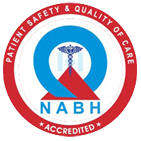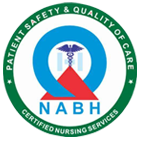FOLLOW THE MISSION HOSPITAL




Altitude sickness, also called mountain sickness, is a group of general symptoms that are brought on by climbing or walking to a higher and higher altitude (elevation) too quickly.
This is because the body doesn’t have enough time to adapt to the lower air pressure and lower oxygen level in the air at high altitudes. The body responds by increasing the breathing rate. In turn, this boosts the blood oxygen, but not to normal levels. The body must adjust to operating with less oxygen than usual. When a person doesn’t give the body time to adjust, he or she will develop symptoms of altitude sickness.
Typical symptoms include headache, nausea, vomiting and lightheadedness.
Symptoms of mild, short-term altitude sickness also include dizziness, fatigue, shortness of breath, loss of appetite, sleep problems and a general loss of energy. Symptoms usually begin within 12 to 24 hours of arriving at a high altitude. Symptoms lessen within a day or two as the person gets used to the altitude.
Symptoms of moderate altitude sickness are more intense and are not relieved by over-the-counter medicines. Fatigue, weakness and shortness of breath worsen instead of improving over time. The affected person may start to show loss of coordination and have difficulty walking, severe headache that is not relieved by medicines, nausea and vomiting, and tightness or congestion in the chest. Normal activity is difficult, although the person may still be able to walk on his or her own.
Symptoms of severe altitude sickness include shortness of breath at rest, inability to walk, confusion and fluid buildup in the lungs and/or brain. Other symptoms may include cough and a gray, pale or bluish skin tone. Severe altitude sickness is an emergency situation, and the affected person must be taken to a lower altitude immediately.
Altitude sickness can affect anyone who goes to high altitudes without giving the body time to adjust to the changes in air pressure and oxygen level. High altitude is defined as 8,000 - 12,000 feet above sea level. Very high altitude is 12,000 - 18,000 feet, and altitudes above 18,000 feet are considered extremely high altitude. For comparison, New York City has an altitude of 33 feet, Indianapolis, Ind. has an altitude of 797 feet, Denver, Colo. (the “Mile-High City†) is at 5,000 feet, and the Grand Canyon is 6,600 feet above sea level.
The more rapidly a climb to high altitude, the more likely that altitude sickness will develop. Altitude sickness also is more likely to develop when climbs are more difficult and take more energy, compared with a slow and easy climb.
Age, sex and general health do not seem to make a difference in risk for altitude sickness. However, people with lung or heart disease may be told to avoid high altitudes. People who live at lower elevations and are not used to higher altitudes and people who have had altitude sickness previously seem to have a higher risk for altitude sickness.
Skiers, hikers and anyone planning a trip to location at a significantly higher than what they are used to should be know the signs and symptoms of altitude sickness and how to prevent and treat it.
Pregnant women should ask their doctor before traveling to a high altitude location.
When headache plus one other symptom occur within 24 to 48 hours of changing elevation, altitude sickness should be considered. Most experienced climbers recognize the symptoms in people who are experiencing mild to moderate altitude sickness.
In cases of severe altitude sickness, a doctor will make the diagnosis based on signs, symptoms and the situation (the person was at a high altitude). The doctor may listen to the chest with a stethoscope or take a chest X-ray to determine whether there is any fluid in the chest. In the most severe cases, a doctor may order a brain MRI or CT scan to check for fluid in the brain.
It is very important to know the symptoms of altitude sickness so that treatment can be started early while the illness is still mild.
For all stages of altitude sickness, the main treatment is to go down to a lower altitude as quickly and safely as possible. For mild altitude sickness, over-the-counter medicines should relieve headache. Other symptoms will go away quickly at a lower altitude.
Symptoms of moderate altitude sickness usually improve in 24 hours at an elevation that is at least 1,000 to 2,000 feet lower. Symptoms should go away completely within 3 days.
People who have severe altitude sickness must be taken to a lower elevation (no higher than 4,000 feet) immediately. They must be seen by a doctor as soon as possible. Hospital care may be needed.
Fluid in the brain (cerebral edema) may be treated with dexamethasone, a steroid that can help reduce swelling in the brain.
Treatment for fluid in the lungs (pulmonary edema) may include:
Some highly skilled climbers and hikers may carry a portable oxygen chamber, also called a hyperbaric oxygen chamber, with them as part of their standard high-altitude gear. The “chamber†is a body bag that is pumped full of air. Inflating the bag increases the oxygen concentration allowing the person in the bag with altitude sickness to breathe in more oxygen.
Medicines. Acetazolamide is a prescription drug that increases a person’s breathing rate so that more oxygen is taken in. It helps the body adjust to higher altitudes more quickly and reduces minor symptoms of altitude sickness. Dexamethasone is also a prescription drug that is sometimes used to prevent altitude sickness.
Most people who get altitude sickness only get the mild form. Symptoms lessen when the person returns to a lower altitude. There are no lasting adverse effects. Even moderate altitude sickness resolves fairly quickly when the affected person descends to a lower elevation. After 2 or 3 days, the person can safely climb to higher elevations if desired.
Individuals who develop severe altitude sickness with swelling and fluid in the lungs or brain can be at risk of serious complications, including coma or death. Prompt treatment reduces the risk.
The best way to prevent altitude sickness is by acclimatization. This is a process that allows your body time to adapt to the change in oxygen concentration at a higher altitude. In general, this means climbing to a higher level at a slow pace.
Changes that occur in the body that help it acclimate to a higher elevation include:
Guidelines for proper acclimatization include:
Climbing experts recommend taking along enough tanks of oxygen to last for several days when traveling above 10,000 feet. Individuals at risk for developing low levels of oxygen in the blood (anemia) should ask their doctor about taking an iron supplement to help maintain blood oxygen levels.

A Unit Of Durgapur Medical Centre Pvt. Ltd.